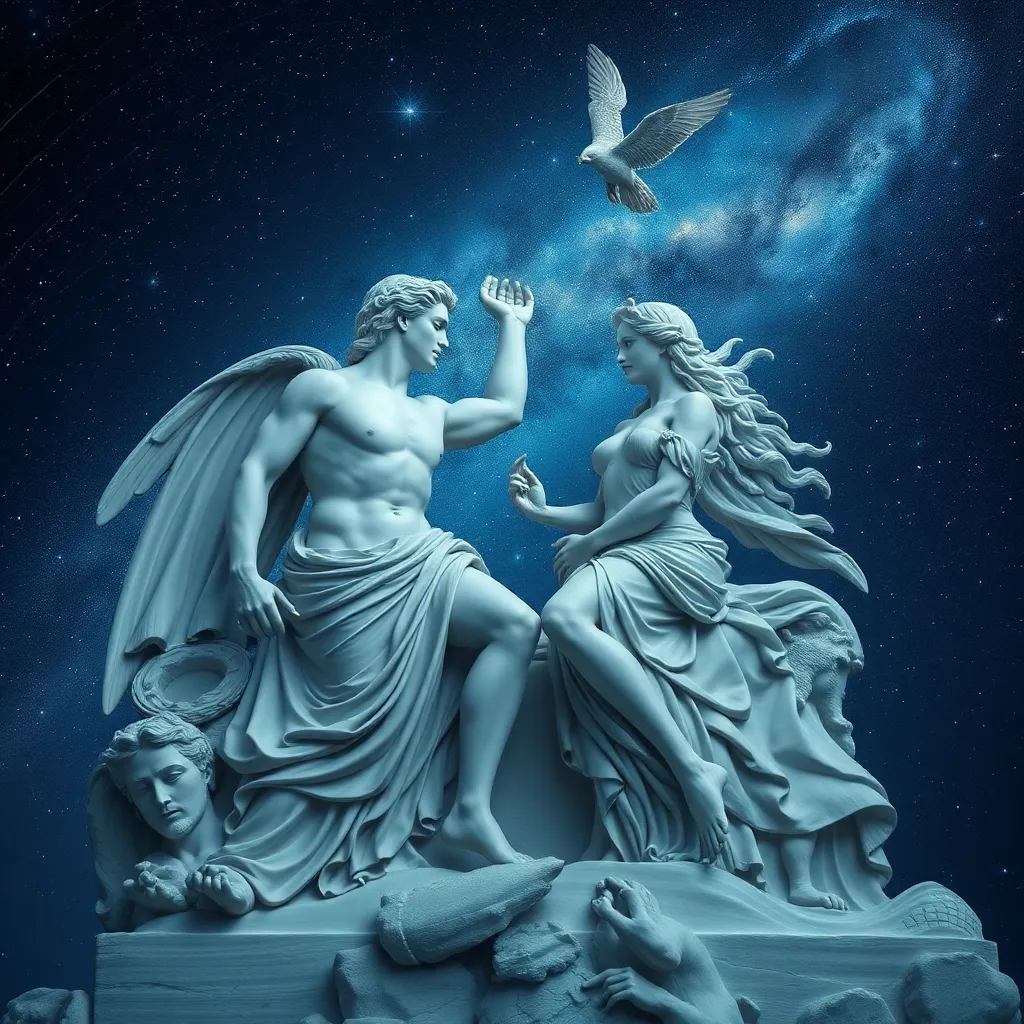Perseus and Andromeda: A Love Story Written in the Stars
Introduction: The Mythical Origins of Perseus and Andromeda
Greek mythology is a rich tapestry of tales that intertwine gods, heroes, and mortals, each story brimming with lessons and moral complexities. Among these narratives, the love story of Perseus and Andromeda stands out as a poignant tale of courage, sacrifice, and romance. Their journey unfolds against a backdrop of divine intervention and monstrous threats, capturing the essence of human emotion and the ideal of heroic deeds.
Perseus, the valiant hero, and Andromeda, the beautiful maiden, have become enduring symbols of love and adventure. Their story not only exemplifies the trials of a hero but also highlights the strength of love in the face of adversity. This myth has transcended time, resonating with audiences and inspiring countless adaptations throughout history.
The Hero: Perseus and His Legendary Quest
Perseus is celebrated as one of the greatest heroes of Greek mythology. He was born to Danaë, the daughter of King Acrisius of Argos, and Zeus, who visited her in the form of golden rain. This unique conception made Perseus a demi-god, destined for greatness.
His legendary quest began when he was tasked with obtaining the head of Medusa, a Gorgon whose gaze could turn anyone to stone. Armed with gifts from the gods—including a reflective shield from Athena, winged sandals from Hermes, and a cap of invisibility—Perseus faced numerous challenges:
- Finding the location of the Gorgons
- Defeating the monstrous Medusa
- Navigating treacherous terrain and outsmarting formidable foes
Perseus’s character is defined by his bravery, cleverness, and heroism. He embodies the ideal qualities of a hero, using his intellect and strength to overcome seemingly insurmountable obstacles. His journey not only tests his physical abilities but also his moral compass, as he learns to balance the demands of heroism with compassion and respect for others.
The Damsel in Distress: Andromeda’s Fate
Andromeda, the daughter of King Cepheus and Queen Cassiopeia of Ethiopia, was renowned for her beauty. However, her mother’s vanity led to dire consequences. Cassiopeia boasted that Andromeda was more beautiful than the Nereids, sea nymphs who were favored by Poseidon. Angered by this arrogance, Poseidon sent a fearsome sea monster, Cetus, to ravage the coast of Ethiopia.
To appease the god and save their kingdom, Cepheus and Cassiopeia were forced to sacrifice Andromeda, chaining her to a rock as an offering to the monster. This tragic fate illustrates the themes of beauty and sacrifice in mythology, with Andromeda symbolizing the innocent victim caught in the web of divine retribution.
The Fateful Meeting: Love at First Sight
As fate would have it, Perseus arrived in Ethiopia just as Andromeda was bound to the rock. Upon seeing her, he was captivated by her beauty and moved by her plight. The rescue unfolded dramatically, filled with romantic tension and heroic resolve.
Their first encounter was charged with emotion; Perseus, driven by a blend of admiration and love, vowed to save her. This moment is often interpreted as love at first sight, showcasing how true love can emerge in the most dire circumstances. Their connection highlighted the cultural ideals of courtly love, where a hero’s quest is often motivated by romantic passion.
The Triumph Over Evil: Defeating the Sea Monster
With Andromeda’s life hanging in the balance, Perseus prepared to confront Cetus. The battle was fierce, with Perseus employing both strategy and strength. Using the reflective shield given by Athena, he was able to avoid Cetus’s deadly gaze and strike the beast down.
This heroic showdown serves to intertwine themes of courage and love, as Perseus fights not only for his own glory but for the life of his beloved. The victory over Cetus not only liberates Andromeda but also cements their bond, showcasing the power of love to conquer evil.
The Journey Together: Marriage and Legacy
Following the defeat of Cetus, Perseus and Andromeda’s love flourished. Their wedding was celebrated with great joy, symbolizing the triumph of love over adversity. In mythology, this union is often depicted as a celestial event, with their story immortalized in the stars.
The significance of their marriage extends beyond personal happiness; it represents harmony between humanity and the divine, as Perseus, a demi-god, unites with a mortal. Together, they had several children, including Perseus II, Alcaeus, and Electryon, who continued their legacy.
Additionally, their names are forever etched in the night sky, as the constellations of Perseus and Andromeda remind us of their epic saga.
Cultural Impact: Perseus and Andromeda Through the Ages
The love story of Perseus and Andromeda has had a profound impact on art, literature, and modern media. Throughout history, they have been depicted in various forms:
- Paintings by artists such as Peter Paul Rubens and Edward Burne-Jones
- Literary adaptations in poetry and prose
- Modern films and television shows that reinterpret their tale
Their narrative has influenced storytelling conventions, particularly the archetype of the hero’s journey intertwined with a romantic subplot. This enduring love story continues to resonate in contemporary culture, reflecting the timeless nature of love and heroism.
Conclusion: A Love Story Written in the Stars
The journey of Perseus and Andromeda is a testament to the power of love, bravery, and sacrifice. From their fateful meeting to their celestial legacy, their story encapsulates the essence of Greek mythology. It serves as a reminder that love can triumph over adversity, inspiring generations to find strength in their own relationships.
In today’s world, the myth of Perseus and Andromeda remains relevant, encouraging us to embrace courage and compassion in our pursuits. Their love story, indeed, is written in the stars, a beacon of hope for all who dare to dream of love amidst chaos.




